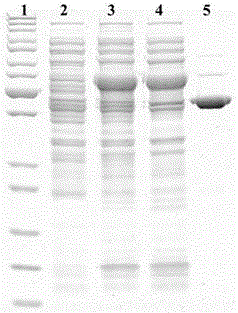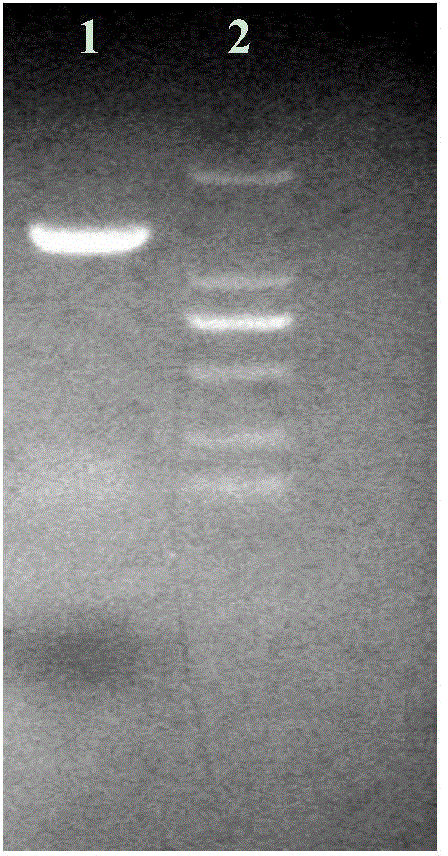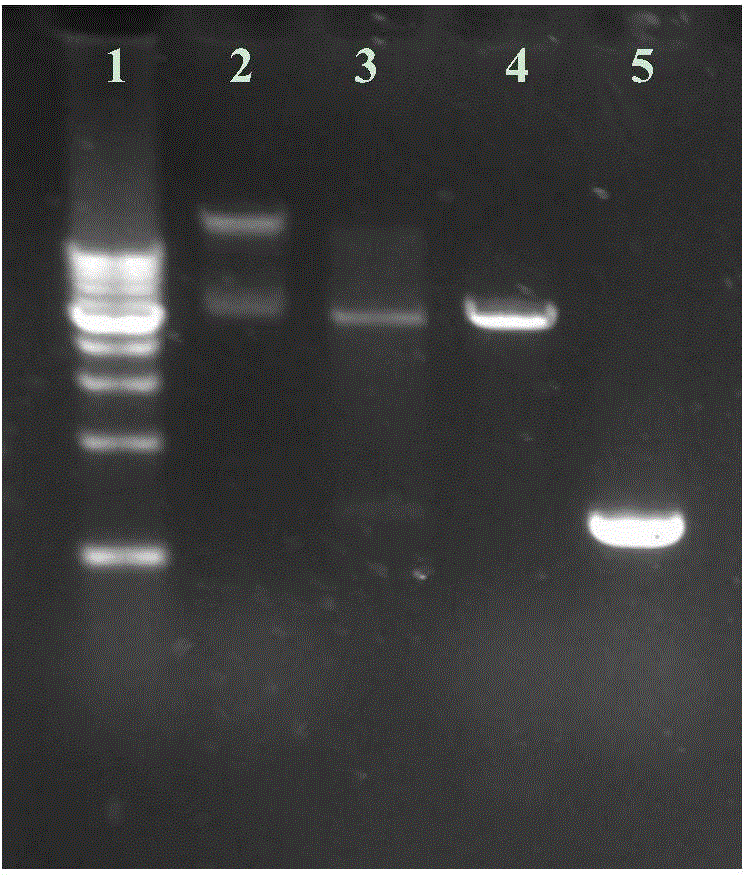High activity cellobiase, coding gene and applications thereof
A cellobiase and encoding gene technology, applied in the field of genetic engineering, can solve the problems of high sugar tolerance and low cellobiose hydrolysis activity, and achieve the effects of high expression, high recovery and high catalytic activity
- Summary
- Abstract
- Description
- Claims
- Application Information
AI Technical Summary
Problems solved by technology
Method used
Image
Examples
Embodiment 1
[0029] Construction of Cellobiase Expression Strain
[0030] 1. Amplification of the Cellobiase Gene
[0031] According to the cellobiase gene sequence (GenBank: CP003184.1) of the highly homologous Thermoanaerobacterium saccharolyticum JW / SL-YS485 used in the present invention with the bacterial strain Thermoanaerobacterium aotearoense SCUT27 as a template, PCR primers were designed:
[0032] P1: 5'-TAGCCCCATATGGCTAATTTTCCAAAAGGT-3' (SEQ ID No: 3)
[0033]P2: 5'-TCCGTCTCGAGAAAAACAATTGAAGCTCTATTTAT-3' (SEQ ID No: 4)
[0034] NdeI and XhoI restriction sites were introduced at the 5' of the primers respectively, and a 6×His tag was introduced at the 3' end of the cellobiase gene, so that the expressed cellobiase had a histidine tag, and the nickel column was used to In the affinity chromatography method, the expressed cellobiase can be purified by affinity chromatography, so as to facilitate rapid and efficient acquisition of pure cellobiase.
[0035] Using Thermoanaerobacter...
Embodiment 2
[0046] Cellobiase expression and protein purification
[0047] The overnight cultured recombinant bacteria E.coli BL21(DE3) / pET-30a-bgl / pGro7 containing the cellobiase gene were inoculated at a ratio of 1:50 in the culture medium containing 20 μg / ml chloramphenicol, 50 μg / ml kanamycin Placed in fresh LB liquid medium for culture at 37°C and 250rpm. When the cell density OD 600 About 0.3-0.5, add the final concentration of 1mg / ml L-arabinose to induce the expression of chaperone protein and continue to culture at 37°C; add IPTG with a final concentration of 1mM to the OD of about 0.6-1.0 to induce the expression of cellobiase, continue at The culture was continued for 6 hours at 25° C. and 200 rpm. Such as image 3 As shown, the recombinant cellobiase protein accounts for about 15-25% of the total protein amount, reaching 12.29 mg / L fermentation broth.
[0048] Collect the cells by centrifugation at 4°C and 8000g, add 1ml of buffer A (20mM phosphate buffer, 500mM sodium chl...
Embodiment 3
[0050] Activity Determination of Recombinant Cellobiase
[0051] Enzyme Activity Determination The cellobiase activity obtained in Example 2 was measured using p-nitrophenylglucoside (pNPGlu) as a substrate.
[0052] Cellobiase enzyme activity assay method is: in 170μl citric acid (100mM) - disodium hydrogen phosphate
[0053] (50mM) pH 6.0 buffer solution, add 20μl 25mM pNPGlu, add 10μL enzyme solution, react at 60℃ for 5min, quickly add 600μL 1M Na 2 CO 3 Stop the reaction. Measure the absorbance value at 405nm, by querying p-nitrophenol (pNP) and A 405 Between the standard curve, the amount of pNP generated by catalysis was obtained.
[0054] The unit of cellobiase activity was defined as the amount of enzyme needed to catalyze the release of 1 μmol pNP in (U)1min.
[0055] The cellobiase specific enzyme activity obtained in embodiment 2 is 180.02U / mg, and the corresponding Michaelis constant K m is 0.69mM.
PUM
 Login to View More
Login to View More Abstract
Description
Claims
Application Information
 Login to View More
Login to View More - R&D
- Intellectual Property
- Life Sciences
- Materials
- Tech Scout
- Unparalleled Data Quality
- Higher Quality Content
- 60% Fewer Hallucinations
Browse by: Latest US Patents, China's latest patents, Technical Efficacy Thesaurus, Application Domain, Technology Topic, Popular Technical Reports.
© 2025 PatSnap. All rights reserved.Legal|Privacy policy|Modern Slavery Act Transparency Statement|Sitemap|About US| Contact US: help@patsnap.com



